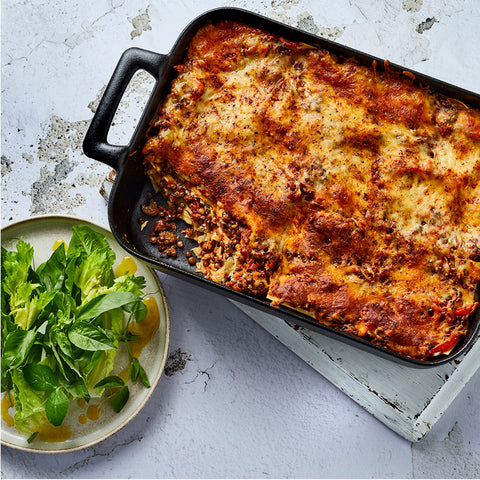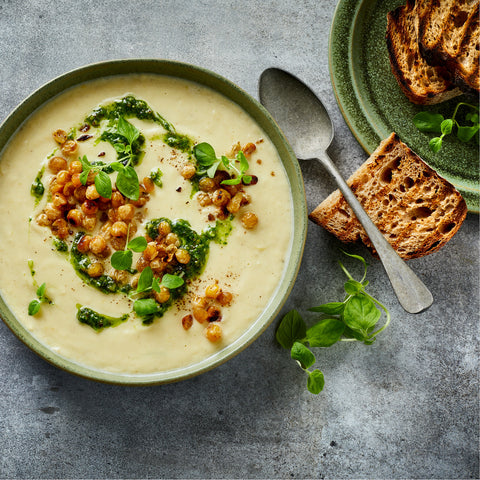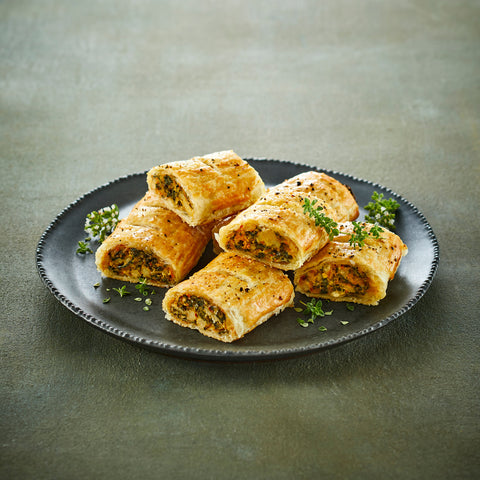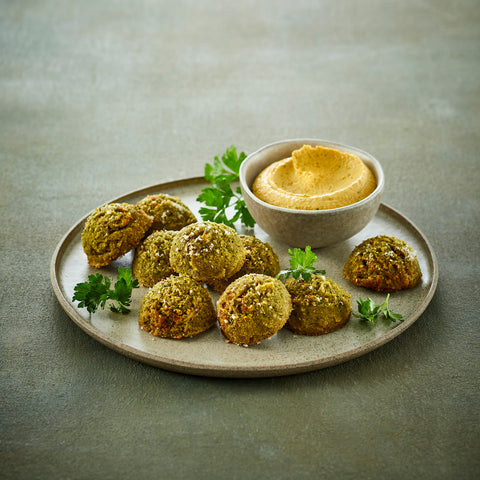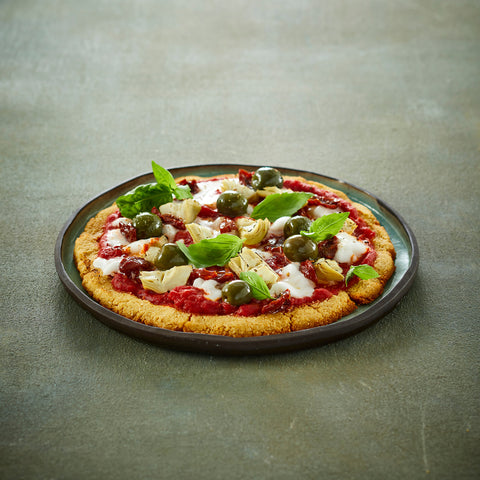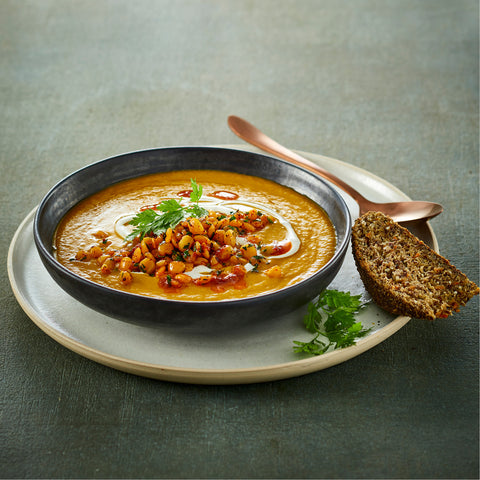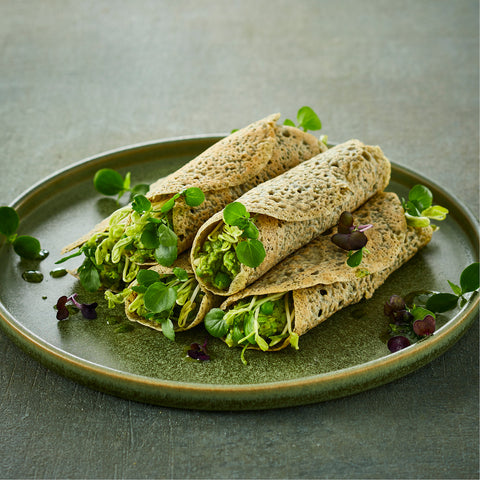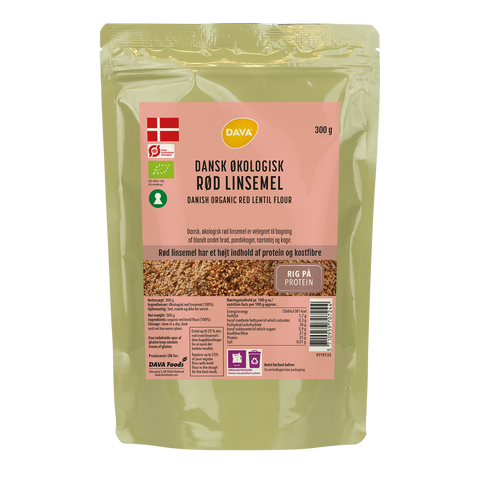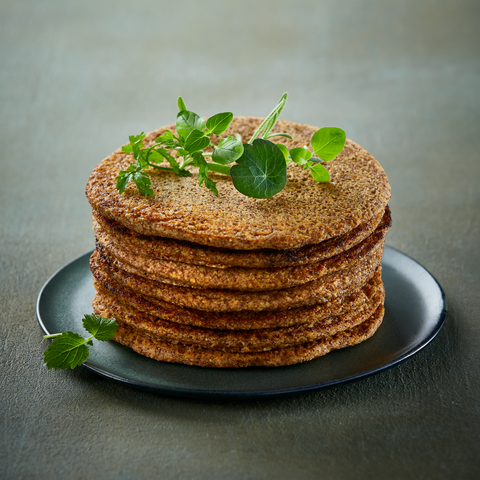Mer' om bælgfrugter
Hvad f*ck er en bælgfrugt? Fødevarestyrelsen anbefaler 100 g bælgfrugter om dagen, og det er der faktisk mange gode grunde til. For bælgfrugter er ikke alene en klimavenlige og næringsrige råvarer - de kan også udrette en masse små mirakler i køkkenet 👨🏼🍳
Her på siden, finder du svar på de mest almindelig spørgsmål omkring bælgfrugter: Hvad er de gode til? Hvordan tilbereder vi dem? Hvordan får vi mere smag i vores måltider med bælgfrugter?
Læs med her og bliv inspireret til kom godt i gang med den vidunderligere verden af bælgfrugter.
Hvorfor bælgfrugter?
Vi har dyrket bælgfrugter i Norden siden Bronzealderen, og især ærter har fyldt både i landbruget og på tallerkenerne (du kender nok retten "gule ærter") indtil midten af 1800-tallet. Herefter overtog korn- og kartoffeldyrkning, og bælgfrugten blev lige så stille skubbet ud.
Nu er bælgfrugterne tilbage, og det er der en rigtig god grund til. Bælgfrugter er nemlig ikke alene klimavenlige afgrøder, de fleste af dem har også et højt indhold af protein og kostfibre. Selvom en bælgfrugt på overfladen kan virke lidt kedelig, så handler det om at udnytte dens potentiale til at suge smag, give fylde og konsistens til hverdagsretterne.
Kend din bælgfrugt
Smag, tilberedning og serveringstips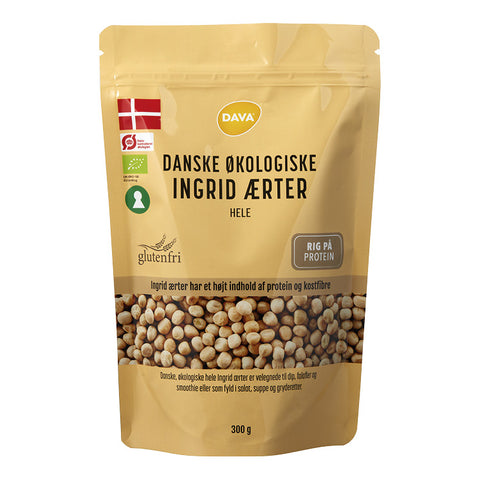
Hele Ingrid ærter
SMAG: Sød, let bitter med noter af ærter. Fast, koger ikke så nemt ud.
TILBEREDNING:
Kogetid med udblødning: Udblød ærterne i 10-12 timer. Kog dem i 30 minutter.
Kogetid uden udblødning: Kog ærterne i 1-1,5 time.
Hvis ærterne skal i suppe eller simremad, er udblødning ikke nødvendig.
Ærterne må gerne have let bid uden at være hårde.
GODE TIL: Ingrid ærter er velegnede til dip og falafler eller som fyld i salat, suppe eller gryderetter.
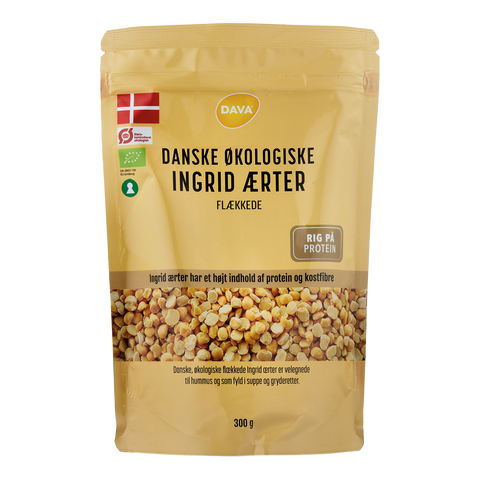
Flækkede Ingrid ærter
SMAG: Sød, let bitter med noter af ærter. Da skallen er fjernet koger de flækkede Ingrid ærter nemmere ud end de hele.
TILBEREDNING:
Kogetid med udblødning: Udblød ærterne i 8-10 timer. Kog dem i 10-15 minutter.
Kogetid uden udblødning: Kog ærterne i 25-30 minutter. Hvis ærterne skal i suppe eller simremad, er udblødning ikke nødvendig.
GODE TIL: Danske, økologiske flækkede Ingrid ærter er velegnede til hummus og som fyld i suppe og gryderetter.
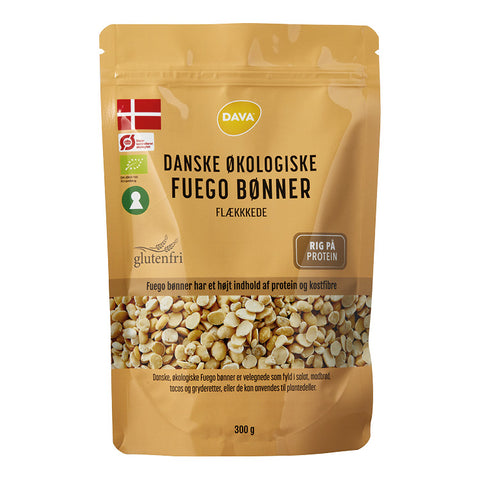
Fuego bønner
SMAG: Bitter og umami. Melet, koger let ud.
TILBEREDNING: Iblødsætning: Mindst 10-12 timer.
Kogning: 30 minutter.
GODE TIL: Flækkede Fuego bønner er velegnede som fyld i madbrød, tacos og gryderetter, eller de kan anvendes til plantedeller og hummus.
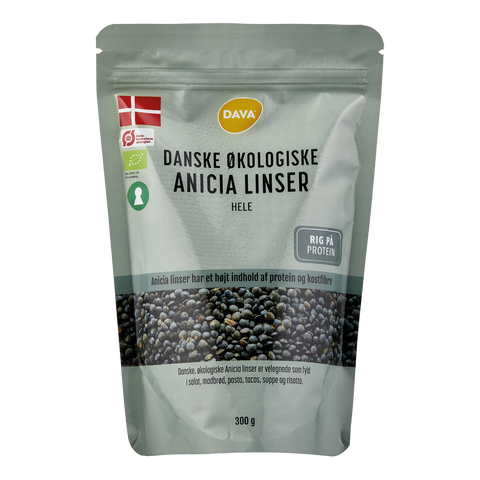
Anicia linser
SMAG: Let krydret smag med noter af friske ærter og peber. Bevarer formen, koger ikke ud.
TILBEREDNING: Kræver ikke iblødsætning.
Kogning: Skylles og koges i 20-25 minutter.
GODE TIL: Anicia linser er velegnede som fyld i salat, madbrød, pasta og tacos eller som topping til eksempelvis suppe og risotto.
TIP #1 KOG STORE PORTIONER PÅ ÉN GANG
Ved at tilberede store portioner bælgfrugter på en gang, kan du spare masser af tid. Kog eksempelvis en hel pose Ingrid ærter og frys så en del af dem ned. Så er der altid ærter klar, når lysten til hummus melder sig med kort varsel.
Smag på bælgfrugten
Smag er helt essentielt når, du skal lære at arbejde med bælgfrugter. For selvom bælgfrugter i sig selv er ret smagsneutrale, så er deres særlige superkraft, at de er virkelig gode til at trække smag til sig, når de tilberedes 🦸♂️
Eftersom de fleste bælgfrugter kræver tilberedning, er det oplagt at tilsætte smag i form af eksempelvis krydderurter, krydderier eller grøntsager til kogevandet. Bælgfrugterne er nemlig særligt gode til at optage smag i opvarmet tilstand. Derfor giver det også rigtig god mening at bruge bælgfrugter i simreretter, hvor de får lov til at trække smag fra rettes øvrige ingredienser i længere tid.
Mel fra bælgfrugter
Lad os starte med en disclaimer: Glutenfri mel er ikke kun for glutenallergikere 💡Man kan også sagtens anvende glutenfri mel til sit bagværk, når man ønsker et nyt smagsindtryk.
DAVAs glutenfri mel, der er malet af linser og bønner, har et højt indhold af protein og kostfibre.
Melet er velegnet til bagværk, hvor du bør erstatte 10-30 % af dit almindelige mel med mel fra bælgfrugter. Du kan også anvende bælgfrugtmel til at bage 100 % glutenfrit. Ærte- og linsemel fungerer også godt som bindemiddel i plantefars eller som jævner til supper og saucer. Når du tilfører det proteinrige mel til dine retter, er det med til at øge og bevare mæthedsfornemmelsen i længere tid.
Vil du have mere viden, tips og inspirerende opskrifter, så tag et kig i vores inspirationshæfte 🍪🥙
Kend dit mel
Smag, tilberedning og serveringstips
Anicia linsemel
SMAG: Linsemel har en let nøddeagtig smag.
TILBEREDNING: Erstat op til 25 % almindeligt mel med linsemel i dine bageblandinger for at opnå det bedste resultat.
GOD TIL: Anicia linsemel er velegnet til bagning af blandt andet brød, boller, tærtedej og kage. Linsemel fungerer godt som bindemiddel i eksempelvis fars, når du laver grøntsagsdeller og i forskellige former for bagværk, lige fra knækbrød til kage.
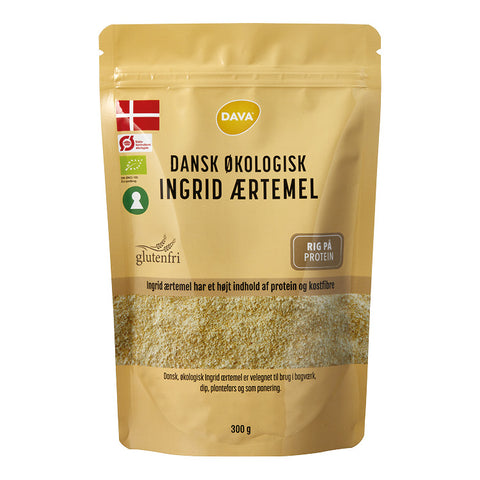
Ingrid ærtemel
SMAG: Ærtemel har en har en mild smag af ærter og nødder.
TILBEREDNING: Erstat op til 25 % almindeligt mel med ærtemel i dine bageblandinger for at opnå det bedste resultat.
GOD TIL: Glutenfri mel fra bælgfrugter er velegnet til eksempelvis kiks, vafler, knækbrød og pandekager, til jævning af saucer, supper og som bindemiddel i plantefars.

